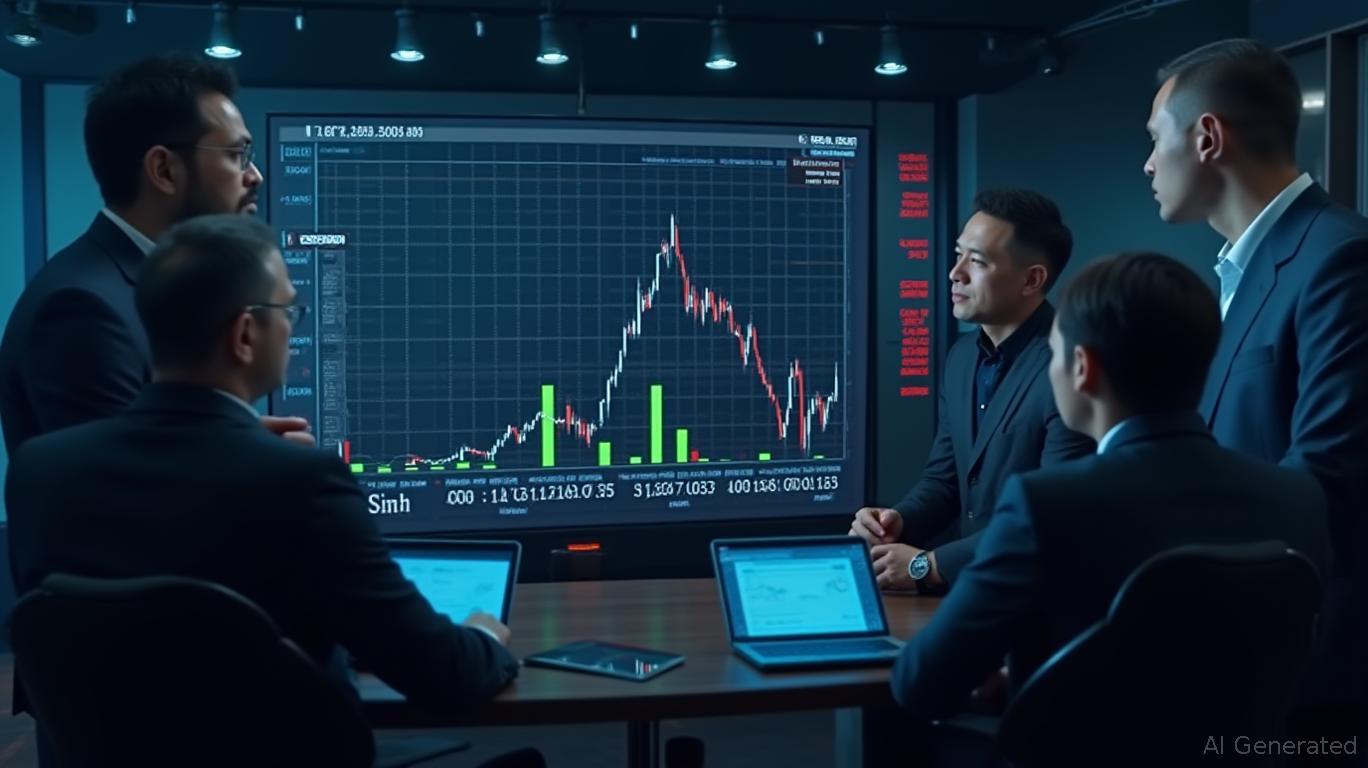Defensive Allocations and Geopolitical Plays: Navigating Inflationary Crosscurrents
The global economy is navigating a precarious equilibrium: inflation is softening, yet geopolitical instability is fueling volatility. This dual dynamic has reshaped equity market priorities, rewarding investors who blend defensive allocations with opportunistic bets on sectors insulated from Middle East tensions. As central banks tread cautiously and energy markets gyrate, tactical portfolio shifts toward utilities, infrastructure, and energy security now offer asymmetric risk-reward opportunities.

Inflation Dynamics: A Softening But Uneven Landscape
Recent data underscores a divergence in inflation trends. Core U.S. inflation (excluding food and energy) has settled at 2.8% year-over-year, with shelter costs—a lagging indicator—driving most of the remaining pressure. Meanwhile, energy prices, though volatile, have declined 3.5% annually due to OPEC+ discipline and renewable adoption. The Federal Reserve's “higher-for-longer” stance now hinges on whether shelter costs moderate, a process likely to take quarters rather than months.
The European Central Bank's pivot to rate cuts reflects a more contained outlook, with Eurozone core inflation projected to hit 1.9% by 2027. Emerging markets, however, face divergent paths: China's growth slowdown has pushed its inflation to 0.4%, while Argentina and Turkey endure hyperinflation fueled by policy mismanagement. This bifurcation argues for regional underweights in inflation-stricken EMs and a focus on dividend-rich sectors in stable economies.
Geopolitical Risks: A Catalyst for Defensive Rotation
Middle East instability has introduced a new volatility axis. Israel-Iran hostilities have pushed WTI crude to $74/barrel, with gold spiking to $3,400/oz as a safe-haven. This dynamic creates two key investment vectors:1. Energy Security Plays: Renewable infrastructure (solar/wind developers) and oil services firms (e.g., Schlumberger, Baker Hughes) benefit from both policy pushes and supply-side disruptions.2. Geopolitical Hedges: Utilities and infrastructure stocks, with their stable cash flows and inflation-linkage, now trade at valuations cheaper than historical averages. The S&P 500 Utilities sector yields 3.8%, versus 10-year Treasuries at 3.3%—a rare spread favoring equities.
Historical parallels reinforce this strategy. During the 1973 oil crisis, utilities outperformed the broader market by 12% annually over three years, while energy stocks surged on supply constraints. Today's environment mirrors this, with utilities offering defensive ballast and energy security plays capturing upside.
Current Valuation Gaps and Contrarian Opportunities
The recent pullback in energy stocks—driven by short-term supply surges—has created an entry point for long-term holders. **** shows a strong correlation between Middle East conflict and price spikes. Investors should overweight energy infrastructure and renewable tech, which benefit from both geopolitical risk and ESG mandates.
In utilities, firms like NextEra Energy (NEE) and Dominion Energy (D) combine regulated rate bases with exposure to grid modernization. Their 4-5% dividends and low beta make them ideal for a portfolio seeking income stability amid volatility. Meanwhile, underweighting rate-sensitive sectors—such as tech and real estate—remains prudent until inflation signals clearer disinflation.
Actionable Tilts for Tactical Portfolios
- Overweight Utilities and Infrastructure: Target sectors with pricing power and inflation-linkage. Consider ETFs like XLU (Utilities Select Sector SPDR Fund) or PSC (Invesco S&P 500 Pure Value ETF), which includes infrastructure plays.
- Geopolitical Insulated Assets: Gold ETFs (GLD) and energy security equities (e.g., oil services, solar manufacturers) offer diversification. Monitor the U.S. Dollar Index (DXY)—a rising DXY signals capital flight to safety, creating further buying opportunities in defensive names.
- Avoid EM Vulnerabilities: Underweight Vietnam (VNM) and Chinese equities (FXI), which rely on U.S. demand and face trade-war headwinds. Focus on South Korea (EWY) and Taiwan (EWT), which benefit from tech resilience and geopolitical neutrality.
Conclusion: Positioning for a Volatile Equilibrium
The current crosscurrent of softening core inflation and geopolitical volatility demands portfolios that balance defense with opportunism. Utilities and infrastructure provide ballast, while energy security plays capture asymmetric upside. As central banks navigate this delicate landscape, investors should prioritize sectors with pricing power, stable cash flows, and insulation from global supply chain shocks. This tactical reallocation—rooted in historical precedents and current valuation gaps—positions investors to thrive in an era of heightened uncertainty.
Final Note: Monitor the June CPI release (July 11) for clues on shelter cost trends. A surprise dip could accelerate Fed easing bets, reshaping risk assets. Until then, stay anchored in defensive sectors and geopolitical hedges.

Comments
No comments yet